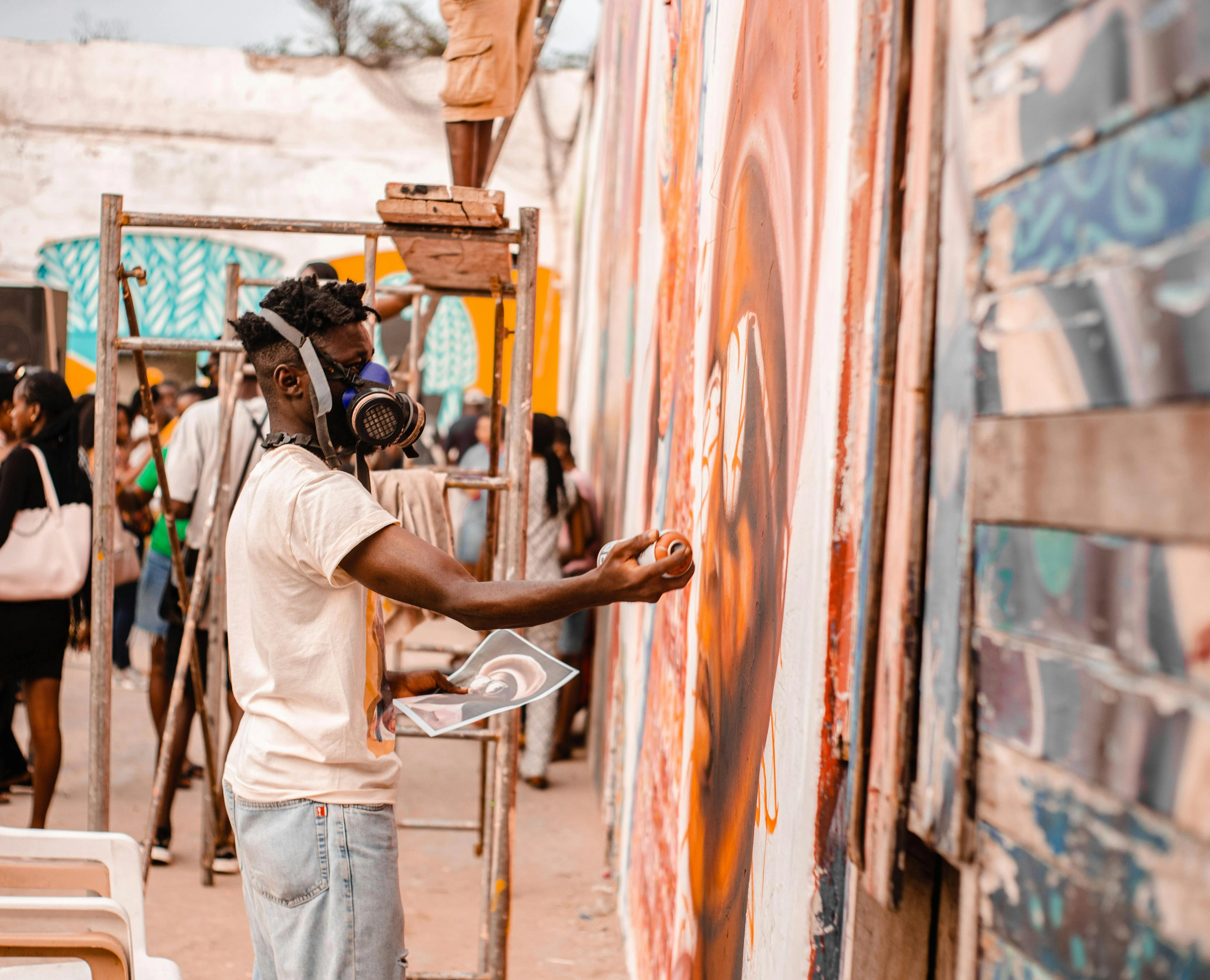
Frankfurt Art Scene: An Artist's Personal, Expanded Guide to Galleries & Museums
Explore Frankfurt's vibrant art scene with an artist's personal, expanded guide to major museums, independent galleries, street art, and practical tips for your visit.
Frankfurt's Art Scene: My Personal (and Slightly Chaotic) Gallery Hop, Expanded Edition
Okay, let's be honest. When you think Frankfurt, you probably think banks, skyscrapers, maybe that big airport. I know I did. It felt... efficient. Important, sure, but maybe not the first place that screams 'artistic soul-searching adventure'. It felt a bit like a perfectly organized spreadsheet, impressive but maybe lacking a splash of unexpected colour. I remember arriving, expecting only glass and steel, and being genuinely taken aback by the quiet pockets of creativity I started to uncover – like ducking into a small courtyard to escape the rain and finding a tiny sculpture garden I never would have known about otherwise. Pure serendipity. But travel, like art, has this wonderful way of surprising you, especially when you ditch the rigid itinerary and just... wander. It's a bit like my own artist's journey – full of unexpected turns and discoveries.
This guide isn't about ticking off every single institution; it's about sharing my personal path through the city's art landscape and hopefully inspiring you to find your own. I find visiting galleries in a new city is a bit like speed dating for the soul. You walk in, glance around, feel a vibe (or don't), maybe linger if something catches your eye, and then move on. Sometimes you find a connection, sometimes it's just polite observation. Frankfurt, surprisingly, offered quite a few 'second dates'.
Beyond the Banks: Uncovering Frankfurt's Creative Pulse & The Museumsufer Story
Frankfurt has this reputation, doesn't it? All business, a bit sterile. But scratch beneath that polished surface, and there's a real, beating heart to its cultural scene. It's not as in-your-face as Berlin's art scene, perhaps, or as historically dense as Rome's art scene, but it has a unique blend. There's serious history rubbing shoulders with cutting-edge contemporary art, and that contrast is where things get interesting for me. It feels particularly poignant in a city that rebuilt itself after the war and became a financial powerhouse – the art scene here often reflects that tension between tradition and rapid modernity. You see it in the juxtaposition of historic buildings housing modern collections, or in contemporary works that subtly comment on the city's economic energy. I recall seeing a bold, abstract installation piece housed within the classical facade of a building on the Museumsufer – it felt like the art was having a quiet conversation with the city's history and its present, a dialogue between past and future.
This post-war context is crucial, but the city's artistic roots go deeper. The Städel Museum, for instance, was founded way back in 1815, long before the skyscrapers dominated the skyline, establishing a tradition of collecting and exhibiting art that survived even the devastation of World War II. The war itself had a profound impact, destroying much of the city and its cultural infrastructure. The subsequent rebuilding wasn't just about finance; it was a deliberate effort to re-establish Frankfurt as a cultural center. This history is subtly woven into the fabric of the art you find, from the significant collections of German Expressionists (known for their bold colours and emotional intensity) at the Städel to the focus on post-war German art at the MMK. It's a scene that feels both grounded in a complex past and energetically pushing towards the future. The focus on German Expressionism, for instance, feels particularly relevant in a city that experienced such upheaval – the raw emotion and bold forms resonate with a history of disruption and rebuilding. And the strength in post-war German art at the MMK directly reflects the city's journey through the latter half of the 20th century.
A key part of this cultural re-establishment was the development of the Museumsufer (Museum Embankment) along the Main River. Starting in the 1980s, this initiative transformed the riverbanks into a dense cluster of museums, making art and culture incredibly accessible. It's a physical manifestation of Frankfurt's deliberate effort to cultivate its cultural soul alongside its financial identity. While home to the major art institutions, the Museumsufer also includes other cultural sites like the German Film Museum or the Museum of Communication. While not strictly art galleries in the traditional sense, these institutions often host exhibitions or installations that blur the lines with visual art and creative expression, offering fascinating detours if you're already in the area. And take a moment to appreciate the buildings themselves – many along the Museumsufer are architecturally significant, adding another layer to the cultural experience.
It reminds me a bit of how different art styles coexist – you can appreciate the meticulous detail of an Old Master one moment and the raw energy of Abstract Expressionism the next. Frankfurt felt like a city embodying that range.
Navigating the Frankfurt Art Maze: My Highly Unofficial Strategy & Practical Tips
So, how do you navigate this blend of history and modernity, the grand and the gritty? My strategy for gallery hopping? Minimal. I mean, I knew the big names existed, but I also love the thrill of stumbling upon something unexpected. Maybe it's the artist in me, always looking for happy accidents. My advice? Pick one or two 'must-sees', then just walk. See where your feet take you. Pop into that interesting-looking doorway. Worst case? You see something you don't like. Best case? You discover your new favourite artist (or at least a decent coffee shop nearby). I once spent an hour completely lost trying to find a tiny photography gallery tucked away on a side street – ended up finding the best Apfelwein bar instead. Happy accident, right? It's about embracing the unplanned moments. It's less about ticking boxes and more about letting the city reveal itself, one unexpected corner at a time. This approach feels particularly suited to Frankfurt's layered character – the unexpected gems are often hidden just off the main thoroughfares.
If you do want a bit more structure, maybe check out guides on how to visit art galleries – but promise me you'll leave room for spontaneity!
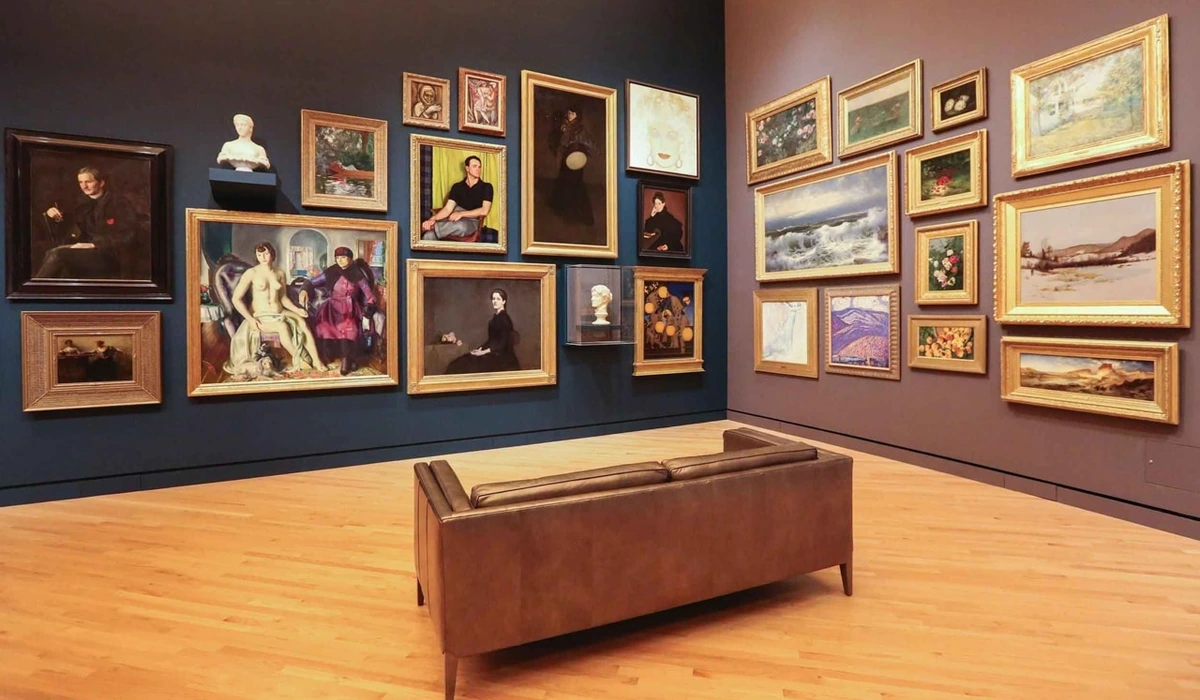
So, you've decided to embrace the chaos (or maybe just add a little structure) to your Frankfurt art exploration? Here are a few practical things I learned (often the hard way!) to help you navigate the city's art scene:
- Plan Ahead (But Stay Flexible): This is crucial! Always check specific opening times online before you go, especially for temporary exhibitions at places like the Schirn or MMK, and especially for smaller independent galleries. These can have different hours, sometimes close for lunch, are often closed on Mondays, or require timed entry tickets. Trust me, showing up to a locked door is a special kind of disappointment. Check their websites or social media for the most up-to-date information, as hours can change. Also, look for local art blogs or online event calendars – they are goldmines for finding smaller gallery openings, pop-up shows, or less advertised events. Be aware that some smaller spaces might close for installation between shows.
- Tickets & Passes: If you plan to visit multiple major museums along the Museum Embankment, look into the Museumsufer Ticket. It can offer significant savings. Also, check if the Frankfurt Card or other tourist passes offer museum discounts or combined transport/museum deals. Students often get reduced entry, so bring your ID! It's like a golden ticket, but for culture!
- Getting Around: The Museumsufer is easily walkable. Getting to areas like the Bahnhofsviertel, Fahrgasse, or Sachsenhausen is simple using Frankfurt's efficient public transport (U-Bahn, S-Bahn, tram). Walking between areas is also a great way to stumble upon street art and smaller finds. Frankfurt is quite compact and easy to navigate – unlike my thought process sometimes. Comfortable shoes are non-negotiable, trust me on this. A day ticket for public transport is usually a good investment if you plan to explore multiple districts.
- Free Entry Opportunities: Some museums or galleries might offer free admission on specific days or times. University galleries like the Städelschule often have free exhibitions. It's worth checking their websites for any such opportunities if you're on a budget. Window shopping at commercial galleries is always free! You can also often find free entry to vernissages (opening nights) at independent galleries.
- Gallery Nights & Special Events: Keep an eye out for special events like 'Nacht der Museen' (Museum Night) or gallery weekend events, which offer extended hours and special programming. These are fantastic times to experience the scene with a buzz, though they can get crowded. Spring and Autumn are often prime times for these events, sometimes coinciding with major art fairs like Art Frankfurt (check current status as fairs can change). These events are often listed on local art portals or city tourism websites. Look for specific annual events beyond these major ones too – smaller festivals or themed art weeks can pop up throughout the year. And as mentioned, keep an eye out for vernissages at independent galleries! They're a great way to feel the local art community's energy.
- Accessibility: Most major museums are well-equipped for visitors with mobility issues, but it's always wise to check the specific website for smaller galleries or historic buildings beforehand. Don't assume older buildings will have lifts or ramps.
- Best Time to Visit: Spring and Autumn often host major art fairs and gallery weekends, bringing extra energy to the scene. However, Frankfurt's museums offer great experiences year-round. Just maybe avoid the hottest summer days if you plan on doing a lot of walking.
- Guided Tours: Major museums often offer guided tours, sometimes in English. Check their websites for schedules and booking information. This can be a great way to get deeper insights into the collection. Some independent galleries might offer artist talks or guided walks during exhibitions.
- Coffee & Breaks: Art appreciation is thirsty work! There are plenty of cafes and bakeries scattered throughout the city, especially near gallery clusters. I particularly liked a small place I found near the Fahrgasse, tucked away in a courtyard, serving excellent coffee and Apfelkuchen – a perfect spot to digest what I'd just seen. Don't hesitate to pop into one for a quick Apfelwein or coffee break to recharge – sometimes the best discoveries happen when you're just taking a moment. Many museums also have their own cafes, which can be convenient.
- Explore Beyond Galleries: Remember to look for art in non-traditional spaces like cafes, hotels, or public libraries. These unexpected finds can add another layer to your art exploration and often showcase local talent. Keep an eye out for public art installations in parks and squares too. I've seen interesting pieces in hotel lobbies and even some public libraries that host small, temporary shows. You might even find art in places you wouldn't expect, like a doctor's office or a local shop, adding little moments of beauty to your day.
- Capture Your Impressions: Don't be afraid to take photos (where allowed!) or jot down notes or sketches in a small notebook. It's a great way to remember what resonated with you and reflect on your experience later. As an artist, I find sketching a detail or writing down a feeling helps solidify the memory.
My Frankfurt Gallery Highlights: A Very Personal Selection
This isn't an exhaustive list – more like snapshots from my own mental scrapbook. These are the places that stuck with me, for one reason or another. Think of it as moving from the grand, established institutions to the more intimate, contemporary pulse of the city.
(A quick note on terminology: While I often use 'gallery' and 'museum' interchangeably in casual chat, museums typically house permanent collections and are public institutions, whereas galleries are often commercial spaces focused on selling art, though both offer incredible viewing experiences. This distinction is important when you're planning, especially if you're interested in potentially buying art or discovering emerging artists.)
Städel Museum
Okay, this is one of the big ones, and for good reason. It's like a walk through art history. You've got Old Masters that make you feel incredibly untalented (just me?), stunning Impressionist works (hello, light!), and a solid collection of Modern Art. It's vast, maybe a little overwhelming if you try to see it all – my brain started to feel like a crowded storage unit after the third floor, and my feet definitely staged a protest. Key highlights include works by Dürer, Holbein, Rembrandt, Monet, Renoir, Degas, Kirchner, and Beckmann, plus the famous portrait of Goethe in the Campagna by Tischbein. My personal highlight was getting lost in the details of some early German Renaissance pieces, then being jolted into the 20th century by the bold colours of the Expressionists. I remember standing in front of a particular Kirchner, feeling the raw energy practically vibrating off the canvas, thinking about how much courage it must have taken to break from tradition like that. The sheer scale of the collection is impressive, but finding those specific pieces that speak to you is the real reward. It’s a proper museum experience, the kind that makes you feel cultured even if you spent half the time wondering if your feet will ever forgive you.
The Städel's collection spans over 700 years, offering a fantastic overview of European art. Beyond the big names, you'll find significant works from the Renaissance, Baroque, and German Romanticism periods. It's fascinating to see the progression of styles and techniques under one roof. For instance, comparing a detailed Renaissance altarpiece to a sweeping Romantic landscape or a vibrant Impressionist scene really highlights the evolution of artistic thought and practice. It's a place where you can trace the lineage of artistic ideas, which as an artist, I find endlessly compelling.
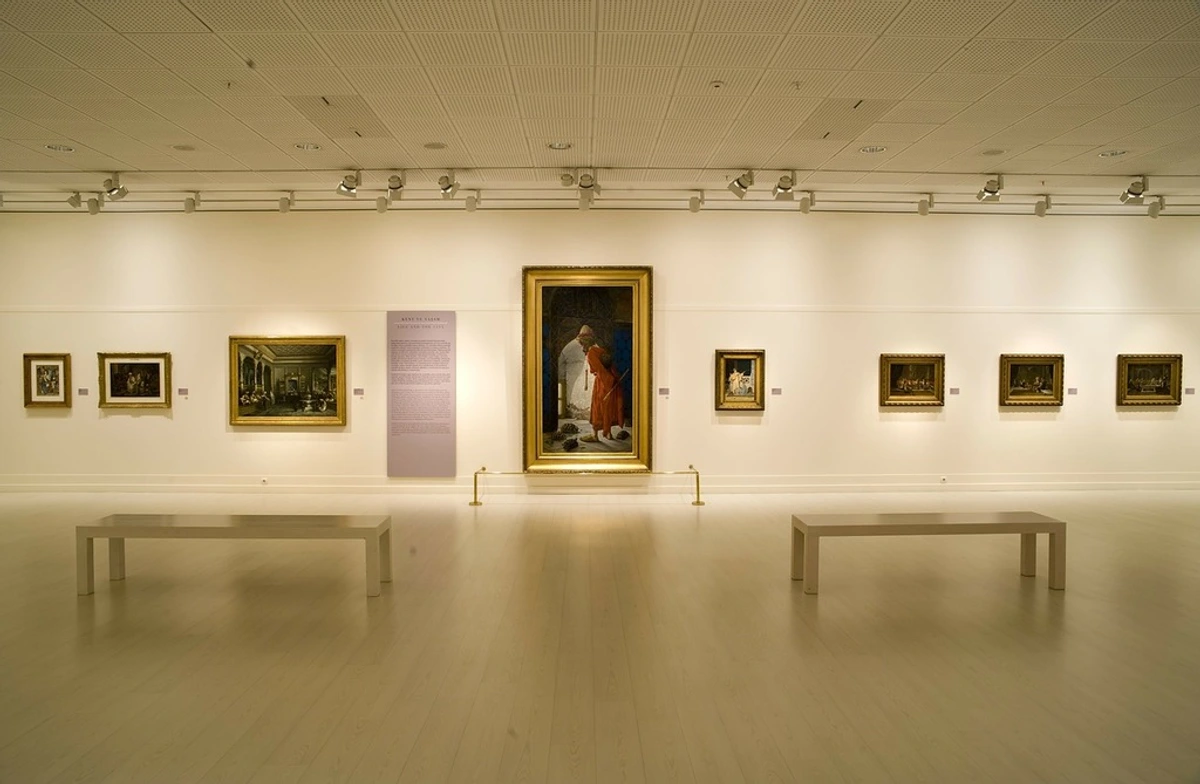
Schirn Kunsthalle Frankfurt
No permanent collection here, which I kind of love. It means every visit is potentially different. The Schirn focuses on temporary exhibitions, often thematic or focused on specific artists or movements. It feels dynamic, current. When I visited, they had a fascinating show that made me rethink... well, a lot of things (isn't that what good art does?). It prompted thoughts on how visual storytelling can challenge perceptions, even in abstract forms. I recall one exhibition that used immersive video installations to explore urban isolation – it wasn't comfortable, but it was incredibly thought-provoking and stuck with me long after I left. It’s centrally located, easy to pop into, and often feels a bit more digestible than the encyclopedic museums. Check their schedule beforehand – you might catch something truly special. Crucially, always check the specific dates and times for temporary exhibitions, as their run times are limited and can differ from the museum's general hours. Showing up to a locked door or a show that ended yesterday is a special kind of disappointment, trust me.
MMK Museum für Moderne Kunst
Architecture lovers, take note. The building itself (designed by Hans Hollein) is a piece of art – all sharp angles and surprising spaces. It feels a bit like navigating a geometric sculpture. Fun fact: locals sometimes call it the "Piece of Cake" due to its triangular shape. Inside, the collection focuses on art from the 1960s to the present, with a particular strength in German post-war art. Think Pop Art, Minimalism, Conceptual Art (where the idea is often more important than the finished object)... the stuff that sometimes makes you tilt your head and go "hmm?" in the best possible way. The MMK holds significant works by artists like Andy Warhol (iconic Pop Art), Roy Lichtenstein (comic-book style Pop Art), Joseph Beuys (influential performance and social sculpture), Sigmar Polke (experimental painter), Gerhard Richter (diverse painting styles, from photorealistic to abstract), and Anselm Kiefer (large-scale works exploring German history and mythology). I recall seeing some striking pieces here, works that really challenge your perception of material and form. There was one series of bold, geometric abstract paintings that really stuck with me, playing with color and composition in unexpected ways, making me question my own approach to form and space. It's a place that challenges perceptions, which is something I deeply appreciate, both as an artist and just as a curious human. It made me think about what makes art 'important' beyond just aesthetics. The way the art interacts with the building's unusual architecture adds another layer to the experience – sometimes a piece feels perfectly at home, other times it creates a fascinating tension.
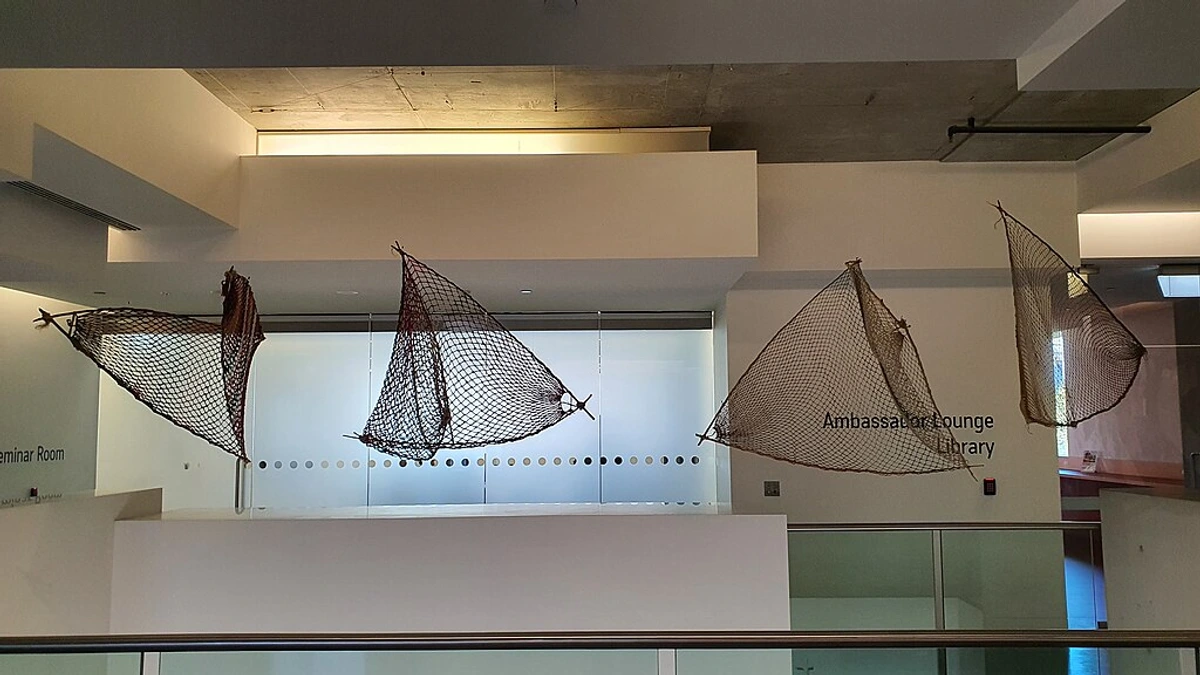
Liebieghaus Skulpturensammlung
Just a stone's throw from the Städel, this museum is dedicated solely to sculpture, spanning millennia. It's housed in a beautiful 19th-century villa with a lovely garden, which adds to the tranquil experience. Inside, you'll find everything from ancient Egyptian pieces to Baroque masterpieces and modern works. It offers a fascinating counterpoint to the paintings in the Städel and is a must-visit if you have a particular interest in three-dimensional art. I remember being particularly struck by a Roman bust that felt incredibly alive, despite its age – a powerful reminder of art's ability to transcend time. The modern sculpture collection, too, offered some surprising forms and materials, making me think about different types of artwork and how artists push boundaries in 3D. It's a quieter, more focused experience than the larger museums, allowing you to really contemplate form and material across history. Walking through the villa and garden, moving from ancient stone to modern metal, feels like a journey through the very essence of form.
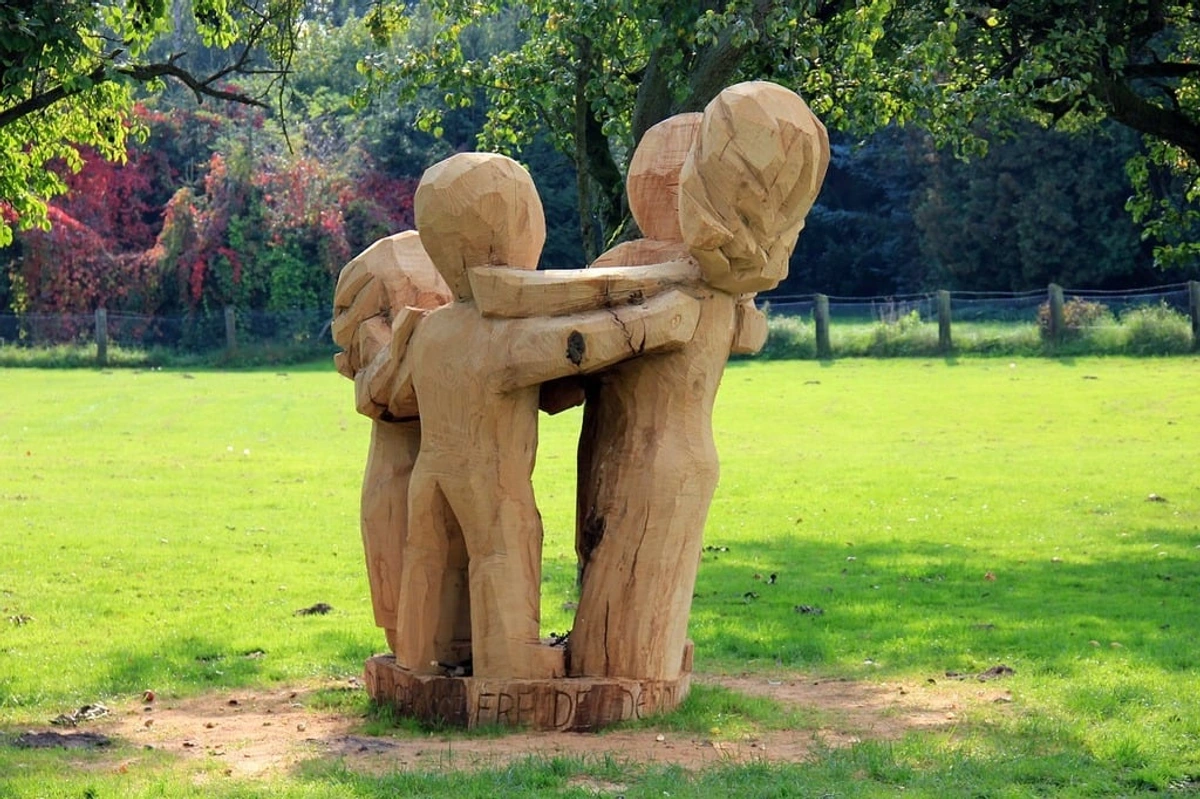
The Real Adventure: Smaller & Independent Galleries
But the real pulse, for me, is often found beyond the major institutions. Stepping into a smaller, independent gallery feels different – maybe a little less formal, a bit more direct. It's where you get a sense of the city's current creative energy, often raw and experimental. These aren't just places to look; they're often where you can buy art, discover emerging artists, and get a feel for the local scene. The vibe is usually more intimate, sometimes even a little raw, which I love. You'll find everything from cutting-edge photography and video installations to vibrant abstract paintings and thought-provoking sculptures, often by artists with a strong connection to the region. I once saw a performance piece in a tiny space in the Bahnhofsviertel that involved an artist slowly building a structure out of discarded computer parts – it was weird, challenging, and utterly captivating, feeling like a direct commentary on the city's tech-driven identity.
Frankfurt has clusters of these smaller galleries, particularly (I found) around areas like:
- The Museumsufer (South Bank): While home to the big names, you'll also find smaller, established commercial galleries tucked away, often focusing on painting and sculpture. This area's history and proximity to major institutions lend it a more traditional, established gallery feel. Look out for places like Galerie Bärbel Grässlin, known for contemporary painting and sculpture (I was particularly drawn to a series of large-scale abstract works here), or Galerie Anita Beckers, often showcasing photography and new media (like video art or digital installations) – their focus on digital art felt very current. These galleries often represent more established contemporary artists.
- Bahnhofsviertel (near the Central Station): This area is often described as edgy or gritty due to its historical association with the red-light district and its ongoing transformation. This character seems to foster a more experimental and raw artistic output, making it a hub for galleries pushing boundaries, often featuring experimental or new media art like video installations or performance art. The lower rents and transient nature of the area can attract artists and galleries looking for space to experiment outside the mainstream. Stepping into a gallery here felt like entering a different world, full of unexpected perspectives and a palpable sense of creative urgency. You might find spaces like basis e.V., a production and exhibition space for artists, or smaller project rooms that pop up and disappear. I saw a fascinating installation here once, using flickering neon lights and found objects to create a disorienting, yet beautiful, commentary on urban decay.
- Fahrgasse (Altstadt): Historically known as 'Museum Alley', this street and the surrounding Altstadt area still house several commercial galleries, often with a focus on contemporary painting and works on paper. The historic setting provides an interesting backdrop for modern works. It's a charming area to wander, popping into spaces nestled amongst older buildings. Galleries here might feel a bit more traditional in their presentation but still showcase contemporary artists. Think places like Galerie Maurer or others focusing on established German and international painters. I remember seeing a striking exhibition of large-scale drawings here that felt both classical in their skill and utterly contemporary in their subject matter.
- Sachsenhausen (across the river): Offers a mix of traditional and contemporary spaces in a charming district, from print shops to galleries showing local artists. This district's more relaxed, neighbourhood feel is reflected in its diverse and accessible gallery offerings. I remember wandering down a side street here and finding a tiny printmaking studio with the artist actually working inside – getting to chat with them briefly was a highlight of my trip. You might find galleries like Galerie Greulich or smaller, artist-run spaces here. It's a great area to find more affordable pieces or unique local perspectives.
It's less predictable, more intimate. You might walk into Portikus, a renowned exhibition space for contemporary art housed in a former library, or discover a smaller project space in the Bahnhofsviertel showing installation art that makes you question everything. There are countless others I haven't even discovered yet. These galleries often specialize in specific areas, from painting and sculpture to photography and installation art. It's about the hunt, the potential for discovery around every corner. Sometimes you find gems in the most unexpected places. And if you're thinking about starting your own collection, these smaller galleries are fantastic places to explore buying art from local artists or simply learning more about the contemporary art market. Prices here can range widely, from affordable prints and smaller works by emerging artists to significant pieces by more established names, but generally offer more entry points for collectors than major museums. Before you visit, consider checking the gallery's website or social media for their artist roster or past exhibition archives – it can give you a great sense of their focus and help you decide if it aligns with your interests. Always check their specific opening hours and temporary exhibition dates online before you go – smaller galleries can have more unpredictable schedules than major museums.
Beyond the traditional gallery spaces, keep an eye out for university galleries or independent project spaces. The Städelschule (Frankfurt's prestigious art academy, known for its experimental approach) often has student exhibitions or public events that offer a glimpse into the future of the art scene. Other university art departments or cultural centers might also host exhibitions worth seeking out. To find these smaller spots, check local art blogs, gallery association websites, or pick up a local art map if available. Social media can also be surprisingly useful for discovering pop-up shows or less-advertised spaces. Don't forget to look for art in less conventional spots too – some hotels, restaurants, or even public libraries in Frankfurt might host small exhibitions or display local artists' work, adding another layer to the city's creative landscape. And if you're lucky enough to be there during an opening (a 'vernissage'), definitely pop in! They're often free, lively, and a great chance to see new work and maybe even meet the artist – just be prepared for a crowd and maybe a glass of wine. It's where the real conversations about art often happen, away from the hushed reverence of the big museums.
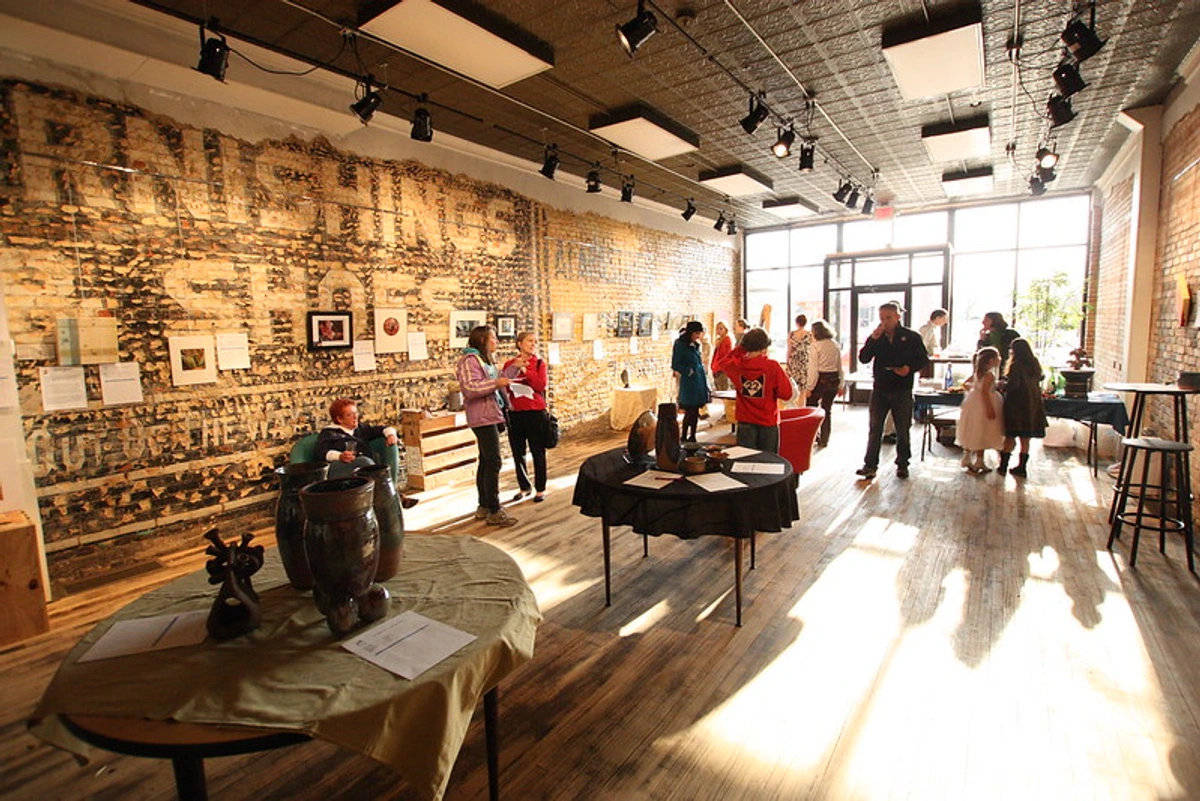
Beyond the Walls: Street Art, Public Art & Unexpected Finds
But the art experience in Frankfurt isn't confined to buildings. Don't forget to look up and around as you wander. Like many cities, it has its share of street art, murals, and public sculptures. You'll find everything from large-scale murals brightening up building facades to intricate stencils and paste-ups tucked away in alleys. Sometimes the most memorable 'gallery' is the city itself. Keep your eyes peeled – you never know what you might find tucked away on a side street or brightening up a public square. Areas like the Ostend district (especially around the European Central Bank, which has become a canvas for some impressive large-scale murals), the Bahnhofsviertel, and along the riverbanks are good places to start looking for larger murals and graffiti pieces. I saw one particularly striking piece under a bridge that used bold abstract forms to comment on urban life – a powerful, fleeting moment of public art. There isn't one single, globally famous street artist synonymous with Frankfurt like Banksy in London, but the scene is active and constantly changing, making every discovery feel personal and unique. That feeling of stumbling upon a vibrant piece of art where you least expect it is truly special, a fleeting exhibition just for you. It also makes you think about the transient nature of this kind of art compared to the permanence of museum collections – a different kind of beauty.
Also keep an eye out for public sculptures in squares and parks – like the Goethe Monument on Goetheplatz or the various installations along the Museumsufer – they add another layer to the city's visual landscape. Look closely at underpasses, building sides, and even utility boxes – art can appear anywhere. The concept of "Kunst am Bau" (art in architecture) is also prevalent, integrating artistic elements into public and private buildings, particularly noticeable in the modern financial district. It's a subtle way art is woven into the city's fabric.
And speaking of cultural figures, while not an art gallery, a visit to the Goethe House (Goethe-Haus), the birthplace of Germany's most famous writer, Johann Wolfgang von Goethe, offers a glimpse into the cultural history that shaped the city and its artistic sensibilities. Seeing the environment where such a mind developed adds a different dimension to understanding the city's cultural roots, complementing the artistic journey.
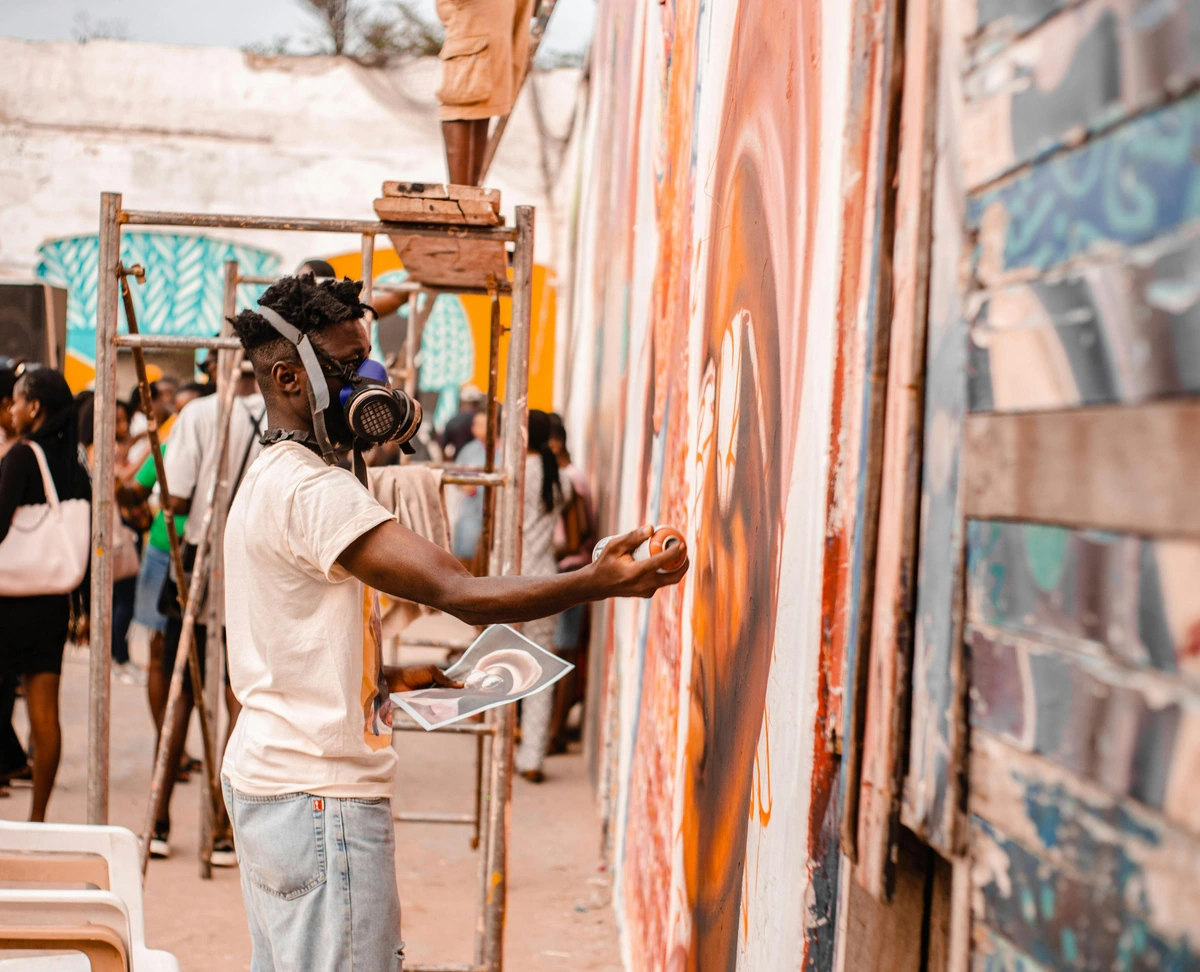
Summary of Key Art Institutions & Areas in Frankfurt
Here's a quick overview of the key places I visited or recommend exploring in Frankfurt:
Institution | Focus | Key Highlights | Area |
|---|---|---|---|
| Städel Museum | Old Masters to Modern Art (Permanent Collection) | Dürer, Rembrandt, Monet, Expressionists, Goethe portrait, Renaissance, Baroque | Museumsufer |
| Schirn Kunsthalle | Temporary Exhibitions (Contemporary & Modern) | Dynamic, thematic shows, often experimental | Museumsufer |
| MMK Museum für Moderne Kunst | Contemporary Art (Post-1960s), German Post-War Art, Architecture | Warhol, Beuys, Richter, Kiefer, unique building, Conceptual Art, New Media | Museumsufer |
| Liebieghaus Skulpturensammlung | Sculpture (Millennia) | Ancient Egyptian to Modern, beautiful villa & garden | Museumsufer |
| Portikus | Contemporary Art (Exhibition Space) | Renowned, often cutting-edge, housed in former library | Near Museumsufer |
| Independent Galleries | Diverse (Painting, Sculpture, Photography, New Media, Installation) | Local artists, emerging talent, experimental work, commercial & project spaces | Various Areas |
| Street Art & Public Art | Murals, Graffiti, Sculptures, Kunst am Bau | Dynamic, often reflects city identity, found throughout the city | Various Areas |
| Goethe House (Goethe-Haus) | Cultural History, Literature | Birthplace of Goethe, historical context | Altstadt |
Making It Your Own Frankfurt Art Trip
Ultimately, the 'best' galleries are the ones that resonate with you. Use lists like this (and others) as a starting point, not a prescription. Allow yourself to be drawn to what interests you. Maybe you'll spend hours in one place or flit between several. Maybe you'll find a piece that speaks to you so much you wish you could take it home (hey, I know a place for art prints and paintings online 😉). Or perhaps you'll be inspired to start your own art collection on a budget or learn how to spot and buy art from emerging artists. The beauty of Frankfurt's scene is its diversity – there's something for every taste and budget if you're willing to look. Prices in independent galleries can range from affordable prints and smaller works by emerging artists to significant pieces by more established names, but generally offer more entry points for collectors.
Trust your gut. Enjoy the process. The journey is just as important as the destination, especially when it comes to art. It's a reminder that art, like life, thrives everywhere, sometimes quietly, waiting to be discovered – whether it's in a grand museum in Frankfurt, or even a small artist's museum in 's-Hertogenbosch, which holds a special personal significance for me as an artist and influences how I see art scenes elsewhere. That little museum, focused on a single artist's work, taught me the power of a focused vision and how even a small space can hold immense creative depth, a lesson I carried with me while exploring Frankfurt's varied scene. Go explore! And if you find something amazing, let me know! I'm always curious about those unexpected finds. Share your discoveries in the comments below!
FAQ: My Thoughts on Common Frankfurt Art Questions
- What's the best area for galleries in Frankfurt? Ah, the classic question! It depends on what you're looking for. For major museums, the Museumsufer (Museum Embankment) is key. For contemporary/independent galleries, explore around the Hauptbahnhof (Central Station) in the Bahnhofsviertel, Fahrgasse in the Altstadt, and parts of Sachsenhausen. But honestly, based on my wanderings, just wander! You'll find things everywhere. It's part of the fun.
- Is Frankfurt a good city for contemporary art? Yes, definitely. Between the MMK, the Schirn's rotating exhibitions, the Liebieghaus's modern sculpture, and numerous independent galleries like Portikus or those in the Bahnhofsviertel, there's a strong contemporary scene. It might require a bit more digging than in some other cities, but it's incredibly rewarding when you find those hidden gems. It's not always obvious, but it's certainly there. The focus on post-war German art and new media in some areas makes it particularly interesting.
- Do I need to speak German to visit galleries? Not really. In the major museums, information is usually available in English. In smaller galleries, you might encounter staff who primarily speak German, but a smile and pointing go a long way! Most people in Frankfurt speak excellent English, especially in tourist-facing areas. Don't let language be a barrier to experiencing the art.
- Any budget tips for seeing art in Frankfurt? Look out for the Museumsufer Ticket if you plan on visiting several major institutions – it's a real money-saver. Walking between galleries is free! And remember, window shopping at commercial galleries costs nothing. Also, check for free entry days or times at smaller institutions or university galleries like the Städelschule. Students often get discounts. Sometimes temporary exhibitions have different pricing too, so check ahead.
- What types of art are particularly prominent in Frankfurt? Frankfurt has a strong focus on Modern Art and Contemporary Art, particularly German post-war art at the MMK. Sculpture is also a major focus thanks to the Liebieghaus. The independent scene is quite diverse, with notable strengths in photography and new media art, especially in areas like the Bahnhofsviertel. You'll find a good mix, but these areas seem particularly well-represented.
- Can I find artist studios or specific art events? Finding individual artist studios can be tricky unless they have public open days (often advertised locally or online). For specific events like exhibition openings, talks, or art fairs, check local art listings websites, gallery social media, or pick up a local art magazine or flyer. The independent scene is dynamic, so staying updated requires a bit of active searching, but it's worth it for unique experiences. Keep an eye on the Städelschule's schedule too. And don't forget to look for vernissages – they're a great way to see new work and potentially meet artists.
- What's the best way to experience the Museumsufer? You could try focusing on one or two major museums that align with your interests (e.g., Städel for history, MMK for modern). Or, if you have the Museumsufer Ticket, dedicate a full day to hopping between several, taking breaks in the cafes or along the riverbank. Walking between them is part of the charm. Don't feel pressured to see everything in one go!
- Should I focus on one area or try to see everything? Unless you have several days dedicated solely to art, trying to see everything is probably unrealistic and overwhelming. I'd recommend picking one or two key areas (like the Museumsufer for major institutions, plus one independent gallery district like Bahnhofsviertel or Fahrgasse) and exploring those thoroughly. Leave room for spontaneous detours! It's better to have a meaningful experience in a few places than a rushed blur of many.
- What's the most unexpected art find you had in Frankfurt? Hmm, that's a good one. Probably stumbling into that tiny sculpture garden in the courtyard while trying to escape the rain. It wasn't on any map I had, just a quiet, beautiful space filled with interesting forms. It felt like a little secret the city shared just with me. Or maybe that performance piece in the Bahnhofsviertel – completely outside my usual comfort zone, but it really made me think.
Final Thoughts: Frankfurt's Quietly Confident Art Scene
Frankfurt surprised me. It doesn't shout about its art scene, but it's there, strong and diverse. It offers a compelling mix of history and modernity, high culture and independent spirit. It’s a city where you can contemplate a Rembrandt in the morning and discover a provocative installation in the afternoon. It might not have been the first city on my 'art pilgrimage' list, but it certainly earned its place. What resonated most with me, as an artist, was the way the city's art scene felt like a quiet conversation happening beneath the surface of its busy financial exterior – a reminder that creativity thrives even in the most unexpected environments, often reflecting the unique character and history of its home. It's the splash of unexpected colour in the perfectly organized spreadsheet. Go explore! And seriously, if you find a hidden gem, drop it in the comments – I'm always curious about those unexpected finds. Share your discoveries in the comments below!




